Whitewater Park Toolkit
A Paddler’s Guide to Championing a Local Project
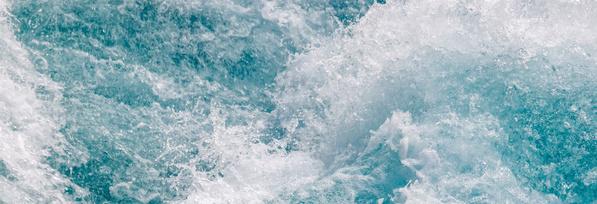

Key Contact




A Paddler’s Guide to Championing a Local Project


Key Contact



While many rivers are not prone to paddling, with a little help they can be converted into destination whitewater play parks, becoming gathering places for communities, enhancing the riparian zones, and even generating revenues for their towns.
America has 250,000 rivers
Water sports generate over $140 Billion
It takes a champion and a little elbow grease. Most of today’s in-stream whitewater parks were the result of a paddler or group of paddlers that had a vision for a local park and the passion to get the ball rolling.
Championing the development of a whitewater park for your community is not a simple process, nor is it the same from one community to the next.
Yet, armed with the right information and inspiration, you can be the spark that leads to a successful whitewater park in your community.
The purpose of this Whitewater Park Toolkit is to serve as a guide to advocate for the development of local in-stream whitewater parks. It provides a general understanding of the process, player, and costs involved in building a fun, safe, and environmentally-friendly whitewater park.
A river park, or whitewater park, is a section of river that has been altered, through careful planning and construction, to offer recreational opportunities and create a place for a community to gather, host events, enjoy nature, and more.
They can also be used for ecological enhancements such as restoring riparian habitat and improving fish passage.

Developing an in-stream whitewater park varies widely in complexity and cost depending on location, intended uses, economic conditions and the local political environment.
It is helpful to get a design professional on-board, at least for a discussion, sooner rather than later. An initial feasibility study is very affordable, but often requires buy-in from your local community before you can start.
River-based parks inspire a community to reconnect with its river in ways not previously available, delivering opportunities for outdoor recreation, leisure, community events, and more.
When paired with adjacent land development and waterfront revitalization efforts, they become gathering places that attract walkers, families, picnickers, and spectators, in addition to the in-stream uses of kayaking, rafting, surfing, wading, and floating.
River modification usually includes the restoration or rehabilitation of in-stream and riparian habitat. This improves river system and ecosystem functions, and can support flood mitigation strategies.
Whitewater parks across the country are generating substantial economic impacts for their host communities as users spend money at local restaurants, lodging and retail establishments.
These venues open the doors to other recreational opportunities such as zip-lining, rock-climbing, concerts and festivals, hiking and biking, attracting various users and corresponding revenues.
A whitewater park’s economic contribution depends largely on the park’s scale and market size, with smaller parks shown to generate incremental spending in the $500,00 to $750,000 range per year while larger parks contribute as much as $19 million annually to local economies.
Whitewater parks provide communities with a closer connection to their rivers and become focal points for outdoor lifestyle experiences. They serve as destinations for outdoor recreation--based tourism, supporting a community’s overall image and brand.
While many factors affect site selection, a whitewater park project should:
• Preserve the natural aesthetic qualities of the river
• Improve the natural functions of the reach
• Be constructed at appropriate sites for human impact
• Be sited to minimize recreational conflicts with anglers and other users
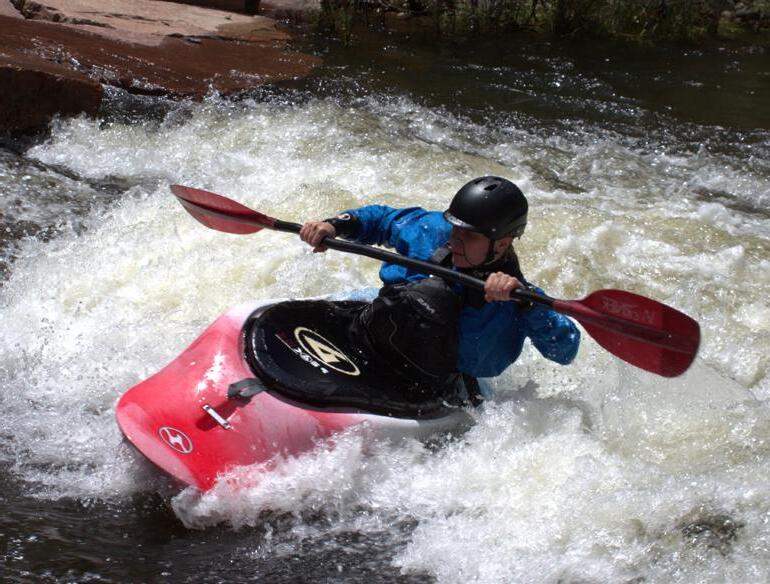

Many things make a particular site feasible, but the most basic qualities are flow and drop.
Every whitewater park needs enough flow to be fun to paddle and enough drop to create attractive features for boaters and floaters. Other key factors include land ownership, river access, floodplain risk and bank stability.
If a site has the necessary flow and drop, then the battle is half won. But, there are still myriad other factors that can affect the feasibility of a specific site. The best way to evaluate a project’s potential is to have a design professional look at the site.

This is the first must-do part of a whitewater park project because it ensures that a project has the right ingredients for success. It determines whether a particular project is possible and, if so, how it could look and function, what it will take to get the project done, and its approximate cost.
5.
Deliverables include a comprehensive report, design documents including a conceptual design and cost estimates, tasks required to complete a project, and permit requirements.
This preliminary phase of a project is powerful as it provides the materials necessary to pursue funding and grants, and provides decision makers the information they need to make informed decisions about whether — and how — to move the project forward.
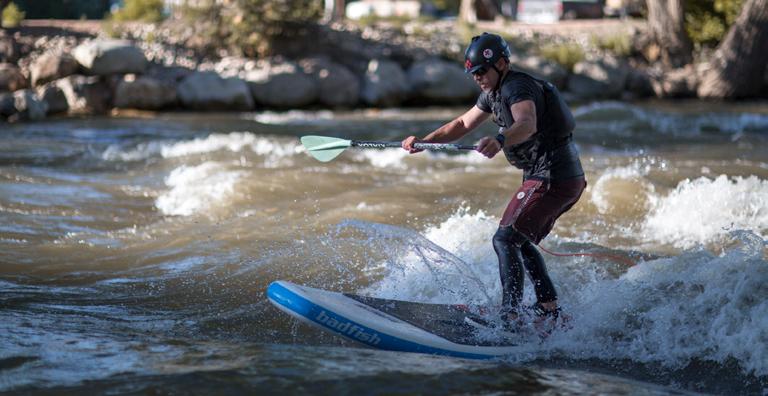

The primary objective for a whitewater park is to create a fun and dynamic place to kayak, float, wade, and play in the river, while achieving additional goals such as habitat improvement, low-head dam removal, fish passage, flood mitigation, and more.
A successful river park should also provide recreation opportunities for all visitors, not just those who choose to enter the river. When possible, it should also be constructed from natural materials that complement the overall restoration project.
The design and development process requires a thoughtful, detailed, organized approach to see a project come to fruition. Determining the right size and scale for a river park depends on several factors, including the community’s vision and level of support, available budget, and land ownership issues.
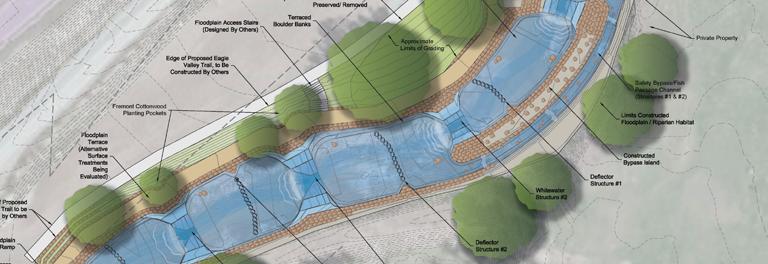
Preliminary requisites for project design and development include a: 1. Comprehensive site plan 2. Programming plan 3. Conceptual design
These tools help guide a project through approvals and financing and define budgets for fundraising, land purchase, and total design costs.
Creating an effective existing conditions model allows for the application of specific dimensions to concepts and to further refine cost predictions. This phase requires some surveying and computer modeling. This can be done separately or as the first step of Preliminary Design.
Preliminary Design is tasked with completing the necessary actions to finalize design functionality and layout, and to gather and process the data necessary to undertake detailed design. It often includes surveying, baseline modeling, defining constraints and objectives, and completing design documents to the permitting level.
Whitewater parks typically require a number of individual (404) permits, which can be a lengthy review process. Obtaining these approvals can require several tasks, including detailed site surveys; wetland delineations; historic structures and/or culturally significant resources; threatened and endangered species surveys; a Proposed Conditions flood model; and the issuance of design drawings stamped by a licensed professional engineer.
Detailed Design is about getting to the nuts-and-bolts of a project — detailed calculations and modeling. The level of computations and modeling is determined by the type of project; some projects can be accomplished with 1- and 2-dimensional modeling while others require detailed physical models.

This is the “after-design” phase, where documents are created that help define the project for the contractor(s), including all sections, details, specifications and bid items. Often the whitewater park designer will work with the client or the community to navigate these processes.
The project goes to bid by the project owner and a contractor is selected and contracted.
This is the messy work. The design team and contractor(s) work together to construct theproject to exacting specifications. The design team will often have representatives in the field virtually full-time to ensure an accurate build that is aesthetic and functional.
The final phase is where everyone gets to get wet! Paddling experts get in the water and test the project, tuning wave characteristics and project features until the project is fully functional and meets the design objectives.

Understandably, the cost of whitewater park development varies greatly from project to project, ranging from $50,000 for smaller, single-feature parks to tens of million dollars for large, multi-feature recirculating parks like the National Whitewater Center in Charlotte, N.C., and Riversport Rapids facility in Oklahoma City.
Typical drop structures are founded on arched structures anchored into the bed and banks of the river. Arches are typically exponentially more expensive the wider they are. An efficient drop structure is typically located in a narrow part of the river to help mitigate project costs.
Structures built on unstable soils often require extensive construction to provide a stable platform for a drop structure. In some cases, this includes expensive enhancements such as sheet-pile cut-off walls.
Smaller parks cost about $50-100K
Larger parks cost about $10M+
Some projects are created in locations ideally suited to small-scale improvements while projects with a larger scope require multiple structures. These can also necessitate a phased development approach, with manageable portions of the project completed per phase.
Parks planned in critical habitat areas are more difficult to design and permit and often require extensive review periods and costly redesign. Where possible, select a site that is already impacted that could benefit from such amenities as fish passage, low-head dam removal and bank stabilization. This can also make permitting and approvals easier to attain.
Some parks require an extensive public process — involving work with local municipalities, task forces, various permitting agencies and pertinent stakeholders — adding cost and time.
Lyons Valley River Park.............................................$610,000 (Lyons, CO)
Cañon City Whitewater Park.................................$920,000 (Cañon City, CO)
Glenwood Whitewater Park................................$1,350,000 (Glenwood Springs, CO)
Meadow/LaVern M. Johnson Park....................$1,438,000 (Lyons, CO)
Eagle Whitewater Park........................................$7,000,000 (Eagle, CO)
Poudre Whitewater Park....................................$11,500,000 (Fort Collins, CO)
Funding a whitewater park can be a project’s biggest hurdle. Funding solutions typically come from a mix of:
While determining financial support options can happen on a parallel track with preliminary concept development and cost analysis, having a complete complete design study along with market, economic and environmental impact analyses are key to successfully navigating this phase of a project.

A volunteer citizen’s committee can be established to gain support for private fundraising, and/or grant/foundation support. It’s also common to seek a location where the local or federal government can help incentivize the project, to restore or enhance a riparian zone or remove an outdated structure.
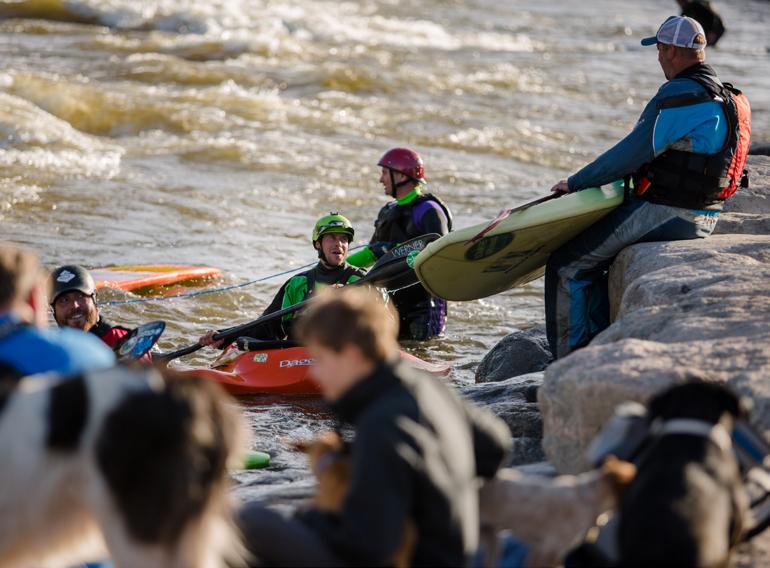
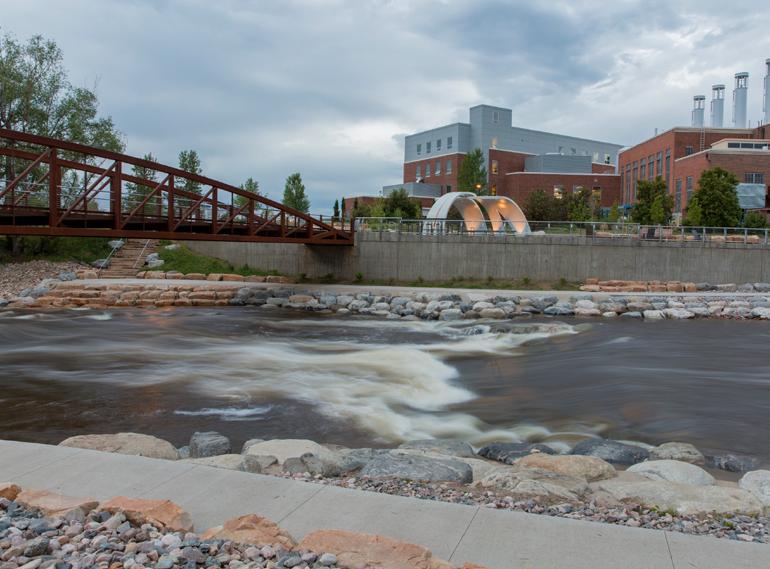
A central part of the Town of Eagle’s River Corridor Plan established in 2015, the $7 million Eagle River Park was vetted through an extensive public process and a cooperative effort with Colorado Parks and Wildlife. The project was funded largely through a 0.5% sales tax approved in 2016 to fund park and trail improvements. Additional funding came from Fremont County, a Great Outdoors Colorado (GOCO) grant, private donors and local business sponsorships.

The $11.5 million Poudre Whitewater Park in Fort Collins, Colo., was accomplished through a collaboration of several local partners and stakeholders. The project’s scope included converting the Coy Diversion Dam into a usable park that fosters fish migration; creating both high- and low-flow river features; and extensive bank restoration and reconfiguration to bolster animal habitat and improve stormwater management. The project was funded through both public and private sources, including a comprehensive voter-supported capital improvement tax initiative; support from the city’s Storm Water, Natural Areas and Parks & Rec departments; and private donations.

Creating coalitions and building community support is vital to any municipal project and whitewater parks are no different. To successfully advocate for a whitewater park in your community, you must first introduce the idea and vision to the greater community in order to generate common understanding and enthusiasm for the project and initial buy-in.
Begin the process by identifying key stakeholders, influencers and decision makers, including community leaders, advocacy groups, local clubs and associations. Use these resources to define the opportunity, identify any obstacles to the project’s completion, and educate the broader community about the park’s benefits.
Create a plan that provides opportunities to engage the public and generate support. This can be done through public open houses, educational events, a dedicated project website, social media platforms, a project-specific newsletter and email campaigns.
Municipal support is crucial, which can often mean first pitching the idea to the city or town council. Many such efforts also originate from local nonprofit or advocacy groups, as in Steamboat Springs, Colo., where local nonprofit Friends of the Yampa River spearheaded their whitewater park. “We brought the idea to the city, and they then helped with all the permitting. It was a combined effort by various groups,” says FOY president Kent Vertrees.
Be prepared! It takes persistence and patience to lay the framework for a proposed park and get it in front of the right decision makers. But persevere and your community can join the nearly 100 others in the country that have successfully built a whitewater park for the betterment of their communities.
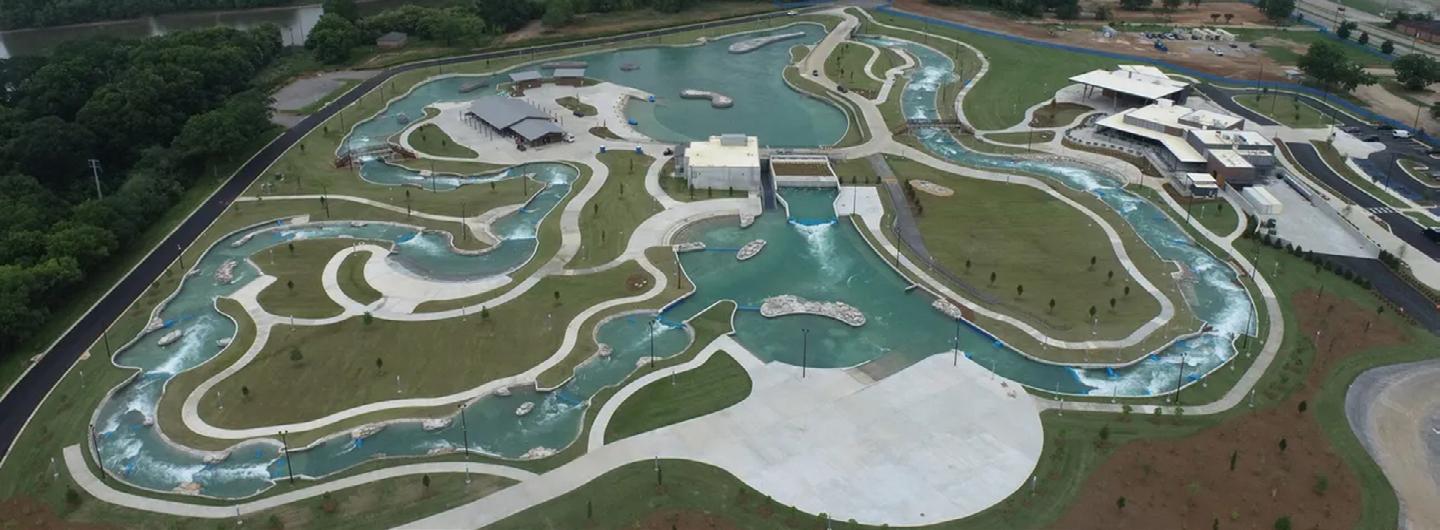
Montgomery, AL
Even large-scale whitewater parks can get their start from a single champion. According to a story in the Montgomery Advertiser, the new $50 million whitewater park in Montgomery, owes itself largely to the efforts of local advocate Megan McKenzie.
Local officials agreed that the government-backed whitewater park and outdoor fun center will redefine the area as a young professional and family destination. Its main attraction is a 25-acre central park that will feature rafting and kayaking along a man-made whitewater course that twists through restaurants, shops, a beer garden, an outdoor concert venue and a hotel and conference center. The wider, 120-acre site will feature a climbing tower, zip lines, mountain biking, rope courses, and more.
McKenzie got the project rolling after hearing her sister’s stories from a recent trip to the National Whitewater Center in Charlotte, N.C. “I’m
just this random woman who had an idea and literally put together the shabbiest PowerPoint,” she told the Advertiser.

The project happened because everyone jumped on board and paddled in the same direction.
- Megan McKenzie
McKenzie first met with city development officials where she explained the idea and showed a rough presentation along with videos from Charlotte. They “got the vision” and sent her up the chain to the County Commission and then the mayor’s office. Other leaders and groups, public and private, soon joined the push.
McKenzie compared it to a relay race, with people carrying the baton forward then handing it off to someone else for the next stretch.
According to the Outdoor Industry Foundation, more than 17.8 million Americans participate in paddlesports. For most, a high-quality whitewater park is worth traveling for, with premier whitewater parks attracting over one million visitors each year. The resulting economic boost is seen by local businesses—restaurants, hotels, gas stations, retail stores, outdoor outfitters and campgrounds—and in local sales tax revenues.
$17.8M+
Calibre’s Whitewater Team has undertaken numerous economic studies for a variety of municipalities seeking to understand and quantify the benefits of creating a whitewater park in their communities.
A typical economic impact study details the overall economic stimulus to a local region generated by a proposed whitewater park. It provides an overview of the river structures for a proposed park, the types of
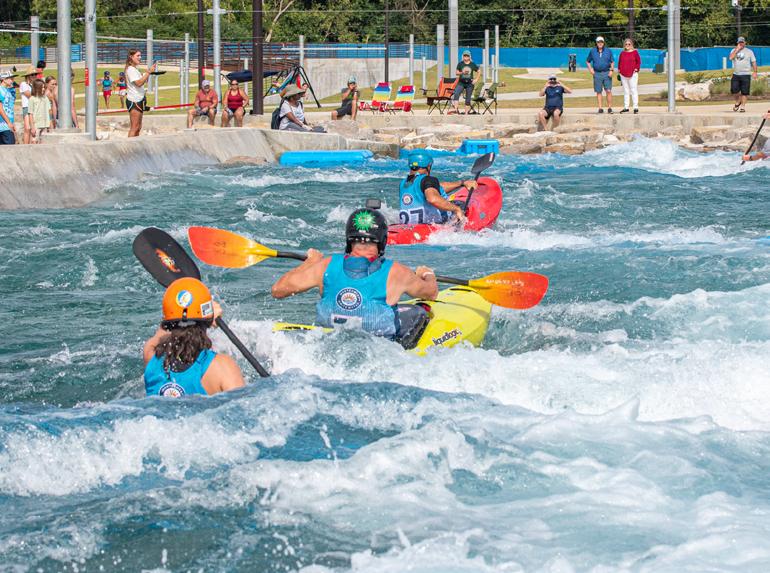
commercial and non-commercial uses (rafting, kayaking, canoeing, tubing) and levels of use. It examines the direct, indirect and induced impacts of the project, including specific influences on local businesses, tax revenues and job creation, and summarizes potential future benefits. Such an analysis guides civic leaders, developers, funding bodies and local stakeholder groups in making informed decisions regarding a project’s development.


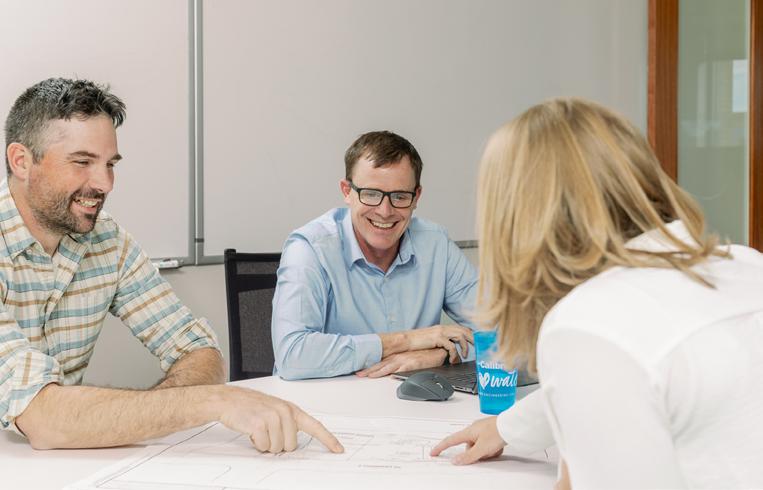
Calibre Engineering, established in 2000, is a Service-Disabled VeteranOwned Small Business (SDVOSB) committed to delivering high-Calibre civil, structural, and whitewater engineering services.
In 2023, we expanded our capabilities by joining forces with S2O Design and Engineering, further enhancing our ability to create vibrant, sustainable communities. Our team of passionate engineers excels in developing innovative, cost-effective designs, with a special focus on integrating rivers into communities through resilient design, ecological preservation, and habitat restoration.
We have provided civil and whitewater engineering for river parks around the world. At Calibre, we believe that the most successful projects are team-oriented and driven by collaboration, creative problem-solving, and a shared vision. We are dedicated to enhancing community spaces through thoughtful planning and design that positively impacts the environment and people who live, work, and play in these spaces.
Calibre integrates sustainable whitewater solutions to create vibrant places that connect people and nature and drive economic growth.
Specializing in in-stream and pumped whitewater park design, our team offers expertise in river engineering, in-stream recreation, and water resource management. Clients benefit from our deep understanding of whitewater culture and our commitment to creating vibrant, resilient, and ecologically sound designs that seamlessly integrate rivers into communities.
We Live the Whitewater Culture
Our paddler engineers bring first-hand experience and knowledge into whitewater and river projects.
Global Leaders
Our Whitewater Team has global expertise and is a leader in whitewater engineering worldwide. Olympic-Calibre Leadership
Led by a three-time Olympic veteran and four-time whitewater world champion, Calibre’s Whitewater Team blends engineering precision with athletic experience.


